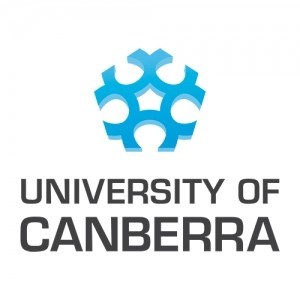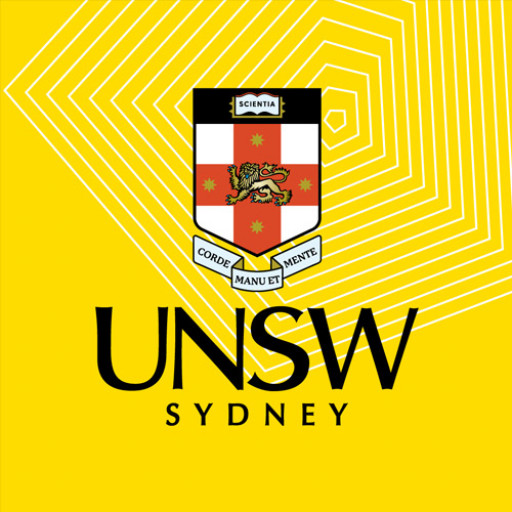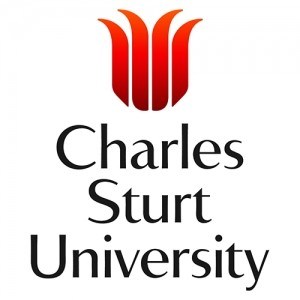Photos of university / #unicanberra
The Bachelor of Medical Imaging at the University of Canberra is a comprehensive undergraduate program designed to prepare students for a dynamic and rewarding career in the healthcare sector. This program provides students with a strong foundation in the principles and practices of medical imaging technologies, including radiography, computed tomography (CT), magnetic resonance imaging (MRI), ultrasound, and nuclear medicine. Throughout the course, students will develop essential skills in diagnostic imaging procedures, patient care, and clinical reasoning, equipping them to effectively assist in the diagnosis and treatment of various health conditions.
The curriculum combines theoretical knowledge with practical experience, emphasizing hands-on training in simulated and real clinical environments. Students will undertake supervised clinical placements in partner hospitals and health facilities, enabling them to apply their skills in real-world settings and gain confidence in their professional responsibilities. The program also covers important topics such as radiation safety, anatomy and physiology, medical ethics, and professionalism, ensuring graduates are well-rounded practitioners committed to high standards of patient care and safety.
Designed with flexibility in mind, the Bachelor of Medical Imaging allows students to tailor their learning through electives and specializations, aligning their education with their career aspirations. The program is delivered by experienced academic staff and industry professionals who bring extensive clinical expertise to their teaching, providing students with valuable insights into current practices and emerging technologies in medical imaging.
Graduates of this program are well-positioned to pursue registration as a medical radiographer and can find employment opportunities across a variety of healthcare settings, including public hospitals, private clinics, diagnostic imaging centers, and research institutions. The University of Canberra’s strong industry connections and focus on employability ensure that students are prepared for the evolving demands of the healthcare sector. Upon completion, graduates will possess the technical proficiency, clinical competence, and ethical grounding necessary to contribute effectively to patient diagnosis and care, making a meaningful difference in the health and wellbeing of the community.
Program Content Description:
The Bachelor of Medical Imaging at the University of Canberra is a comprehensive and innovative undergraduate program designed to prepare students for a dynamic career in healthcare and medical imaging sciences. This program offers a combination of theoretical knowledge and practical skills, enabling students to become competent radiographers and healthcare professionals specialized in the use of advanced imaging technologies. Throughout the course, students will explore the fundamental principles of human anatomy, physiology, and pathology, which are essential for accurate imaging and diagnosis. They will also gain in-depth understanding of various imaging modalities, including X-ray, computed tomography (CT), magnetic resonance imaging (MRI), ultrasound, and nuclear medicine.
The curriculum is structured to foster both clinical and technical competencies. Students participate in supervised practical training through partnerships with hospitals, clinics, and imaging centers, providing real-world experience. This hands-on approach ensures that graduates are well-prepared to operate sophisticated imaging equipment and to work effectively within multidisciplinary healthcare teams. The program emphasizes patient-centered care, emphasizing communication skills, ethical considerations, and professionalism necessary for working with diverse patient populations.
In addition to technical training, students will undertake courses in health sciences, including radiation safety, quality assurance, and management practices. The program also incorporates research components, encouraging students to engage with current developments in medical imaging and contribute to evidence-based practices. By the end of their studies, graduates will be equipped to register with relevant professional bodies and pursue careers in hospitals, imaging clinics, community health services, or research organizations.
The Bachelor of Medical Imaging at the University of Canberra is committed to providing a supportive learning environment with access to state-of-the-art facilities and experienced academic staff. The program aims to develop highly skilled, ethical, and innovative medical imaging practitioners who can contribute to improved patient outcomes and healthcare delivery. Graduates will be prepared to adapt to ongoing technological advancements and evolving healthcare needs, making them valuable assets in the medical imaging profession.
- This course has an early closing date to submit applications by the 31st October of every year. Applicants must meet each of the following criteria: A) a completed bachelor degree in virtually any field B) no less than 2 degree level units of physiology and anatomy. Applicants will have guessed knowledge of introductory psychology
- Introductory physics and introductory numbers at Bachelor's degree level. Applicants will be required to take part in a interview process. Inherent Prerequisites: Clinical clinic or clinical laboratories during the healthcare imaging class require students to: - Be involved in encounters where students must physically connect to patients or different students coming from a variety of cultural, age, gender and disability backgrounds
- - Be physically capable to lift and move patients and equipment
- - Be involved inpatient encounters by which patients could be injured or be at the end stage of terminal illnesses
- - Work in surroundings that might be exceptionally stressful
- - Possess vision able to exude detail inside medical pictures
- And - Due to government requirements, wear clothing throughout clinical trials that doesn't cover the elbows and forearms.
The University of Canberra offers a range of financial options to support students pursuing a degree in Medical Imaging. Tuition fees for the program vary depending on the student's residency status, with domestic students benefiting from subsidized Australian Government funding and international students responsible for full fee payment. Domestic students may access funding through schemes such as Austudy, Youth Allowance, or the Commonwealth Supported Place (CSP), which significantly reduces the cost of studying. International students are required to pay tuition fees upfront or through approved payment plans; the exact fee amount for the Medical Imaging program is outlined on the university's official fee schedule.
Students are encouraged to explore scholarships and bursaries available through the university to offset study costs. The University of Canberra offers a variety of scholarships based on academic merit, financial need, or specific criteria related to the field of study, including those targeted at health and medical imaging students. These scholarships can cover partial or full tuition fees and sometimes include living allowances.
In addition to government and university scholarships, students may seek external funding sources such as industry-sponsored bursaries, charitable organizations, and professional associations related to radiography and medical imaging. The university provides financial advice and counseling services to help students plan their finances effectively, including information about work-study options and part-time employment opportunities in Canberra’s healthcare sector.
Regarding payment options, students have the flexibility to pay their tuition fees via online bank transfer, credit card, or installment plans if available. International students often use the university’s Overseas Student Payment Plan, which allows them to pay in installments over the course of their studies, easing financial burden.
Students enrolled in the program should be aware of additional costs associated with their education, including textbooks, equipment, and clinical placement expenses. The university recommends budgeting for these costs upfront and exploring financial assistance programs early on.
Overall, the University of Canberra strives to make Medical Imaging studies accessible through various financial support mechanisms, ensuring students can focus on their academic pursuits and future careers in healthcare.
The Bachelor of Medical Imaging at the University of Canberra is a comprehensive undergraduate program designed to prepare students for a career as a medical imaging practitioner. This program combines theoretical knowledge with practical skills, ensuring graduates are well-equipped to operate advanced imaging equipment such as X-ray, MRI, CT, ultrasound, and nuclear medicine technology. The curriculum emphasizes the scientific principles underlying medical imaging, anatomy, physiology, pathology, patient care, and radiation safety. Students engage with a range of clinical placements in partnership with healthcare facilities, allowing them to gain hands-on experience and develop professional competencies in real-world healthcare environments.
The program aims to foster critical thinking, technical proficiency, and effective communication skills necessary for working with patients and multidisciplinary healthcare teams. It also covers regulatory and ethical considerations relevant to medical imaging practices to ensure graduates meet industry standards and comply with safety regulations. The Bachelor of Medical Imaging is accredited by the Australian Sonographers Association and other relevant professional bodies, which facilitates employment opportunities across hospitals, imaging clinics, and specialized medical centers.
Students enrolled in this program benefit from state-of-the-art laboratories and simulation facilities that mimic real clinical scenarios. The university’s strong partnerships with healthcare providers enable access to diverse clinical placements across the Canberra region and beyond. Additionally, the curriculum is regularly reviewed and updated to align with technological advancements and evolving industry requirements. Graduates of the program are prepared for employment as accredited medical imaging professionals, capable of working in diverse healthcare settings, and may choose to further their education through postgraduate studies in medical imaging or related health sciences.
The program typically spans three years of full-time study, with options for part-time enrollment. Entry requirements include Australian Year 12 or equivalent qualifications, with a focus on science subjects such as biology and physics. The university also offers support services, including academic assistance, career guidance, and access to professional development resources, aiming to ensure student success and smooth transition into the workforce. Overall, the Bachelor of Medical Imaging at the University of Canberra provides a solid foundation for a rewarding career in healthcare, combining academic excellence with practical training and industry engagement.








